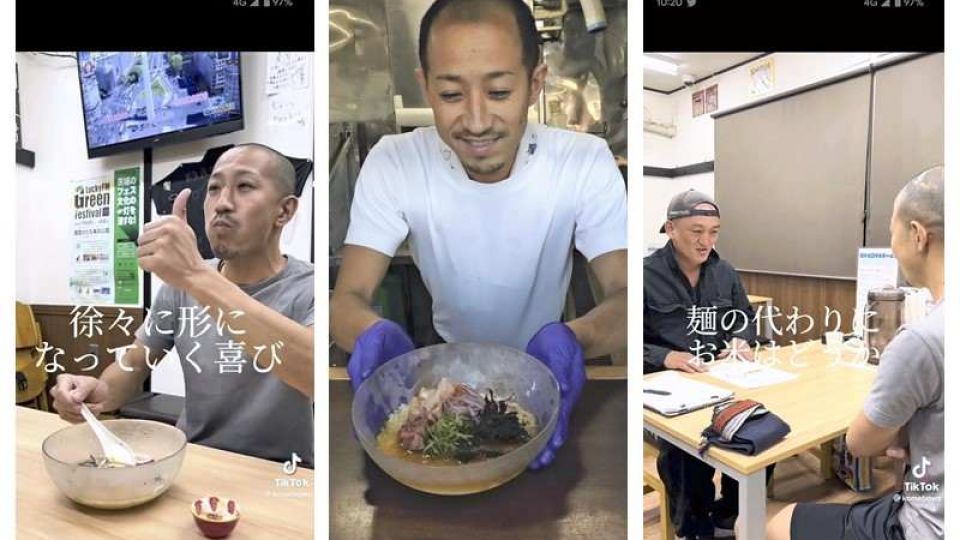October 17, 2022
Japan — It’s not unusual in Japan to see someone have a small bowl of rice with their ramen. But how about only having rice in ramen soup minus the noodles?
A rice wholesaler in Chiba City and a ramen shop owner and chef in Yachimata, Chiba Prefecture, have developed their version of “rahan,” a word created by combining “ramen” with “han,” one of the Japanese readings for “cooked rice.”
The ramen shop will start serving bowls of rahan starting Tuesday.
Teppei Koyama, an official of rice wholesaler Komebouzu, and Yuichi Ochi, owner and chef of Ganso Nikutama Soba Ochi, appear in a video clip promoting their ramen-flavored porridge. The 80-second video has been viewed 1.1 million times since it was posted in mid-September on video-sharing service TikTok.
Many favorable comments have been posted about the video, including, “I have waited for a dish like this.”
The video starts with Ochi, 40, turning down a proposal from Koyama, 38.
“This is a ramen shop,” Ochi says, in mock TV drama style. “It’s impossible for a bowl of ramen to not contain noodles!”
Koyama does not give up and little by little, the pair start working on the dish.
At the end, the two are satisfied by the rice dish they develop.
The video was posted in part because Komebouzu wanted to promote new ways of consuming rice given the current tendency of people in Japan to eat less rice than before.
While the video re-enacts the collaboration as coming together smoothly, in actually there was much work to be done.
Ochi’s ramen soup led him to receive high praise from a magazine specializing in information about ramen. He simmers chicken, pork and beef for more than a half day and a natural sweetness comes out when tasting his soup. Thus the proposed cuisine using rice as the main ingredient made Ochi feel as if his enthusiasm for ramen noodles was being denied.
Koyama’s own enthusiasm changed Ochi’s mind. Koyama has business deals with about 60 ramen shops, but he had decided that Ochi would be the only person with whom he would develop rahan dishes together.
“Considering how this dish is supposed to match rice,” Koyama said to Ochi, “the soup that you make is the only option.”
It took a while, but Koyama’s persistence in negotiating with Ochi finally persuaded the chef.
When eating ramen, some people eat all the noodles but leave some of the soup. With rice porridge, the idea is that all the soup gets consumed, so for Ochi, his ramen soup will not go to waste.
They tried more than 10 variations of the dish. Finally, they created a dish that has good mouthfeel using a less sticky variety of rice produced in the prefecture.
Two styles of rahan have been added to Ochi’s menu. Nikutama Rahan is ¥980 and contains grilled meat, while Hiyashi Niboshi Rahan, a cold rice porridge using dried small sardines to make the soup base, is ¥880.
“I hope this will be a trigger for the spread of rahan,” Koyama said. “I want people to enjoy the taste of rice in each bowl to the last grain, knowing that farmers have taken great care to grow it.”
Ochi can’t wait to start serving rahan.
“Nothing makes me feel better than when I see the bottom of a bowl after a customer has eaten the last drop of soup,” he said. “I’m looking forward to seeing my customers enjoying the dish.”

